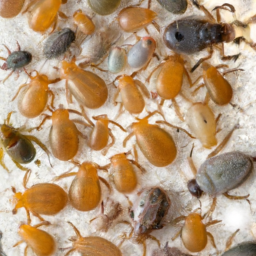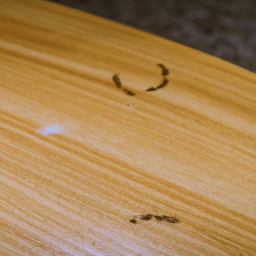Earwig vs Silverfish
One bug or two? It’s Earwig vs Silverfish!
Earwigs and silverfish are two bugs often mistaken for each other, and they can be found in many homes. Despite their similarities, these two insects are very different and require different approaches to be taken care of. You can better protect yourself and your home by learning the key differences between earwigs and silverfish.
Appearance
Earwigs have a unique appearance. They have a flat shape, ranging in length from .25 to .75 inches, a dark brown color, and erect pincers, also called cerci, at the end of their abdomens. At first glance, their cerci may appear dangerous, but they do not have enough strength to puncture the skin.
Silverfish, on the other hand, are silver-gray and have a teardrop shape. They are about the same size as earwigs, ranging in length from .25 to .5 inch. Silverfish also have antennae and three appendages that extend out of their bodies.
Behavior
Earwigs are mainly nocturnal, so they are most active at night. During the day, they can be found in dark and damp places such as in gardens, under mulch, and around woodpiles. They can also enter homes through small cracks in windows and doors.
Silverfish, also nocturnal, are quite active and quick, especially when it comes to moving around. They are found in many places within the home, such as in kitchen pantries, and they swim in water and eat starchy items like flour, bread, oats, and fabrics made of silk, cotton, and linen.
Control
Earwigs:
-
- Remove debris and mulch around your home
-
- Reduce moisture by using dehumidifiers
-
- Mow the grass regularly and keep it short
-
- Seal cracks and crevices around your home
-
- Use an insecticide, such as diatomaceous earth
Silverfish:
-
- Remove piles of wood and other organic debris
-
- Clean your home regularly and vacuum accumulated dust
-
- Be sure to store food in sealed containers
-
- Use insecticides in cracks and crevices, such as boric acid
-
- Buy insect traps or glue boards to catch them
By learning the key differences between earwigs and silverfish, you’ll be one step closer to getting rid of either pest in your home. Understanding how to identify them and following the steps needed to control them will help you keep these pests out of your home.
Earwigs and silverfish are two small insect pests that can infest a home without warning. Though these pests have some similarities, understanding the differences between them is important for determining the type of infestation and the best way to eliminate it.
Most noticeably, the size of the two insects is stark and varied. Earwigs are generally longer and can range in size from around ⅓ inch to one inch. Silverfish, on the other hand, are much smaller and tend to be no larger than ⅛ inch in length.
Both earwigs and silverfish have six legs, but the details of their body shape vary. Silverfish have a more slender body with two long antennae, while earwigs have a stout body that is flattened, with short antennae and small, feeler-like structures on the back end called cerci. Earwigs also have large pincer-like structures, or “forcipules,” at the end of their abdomens.
Though both these bugs may enter homes in search of food, moisture, and shelter, their diets differ in some cases. Both pests like a diet of processed carbohydrates, sugars, and proteins, and both species also eat other insects, but silverfish enjoy eating paper and fabric whereas earwigs prefer plant material.
Due to this difference, they can be seen in different parts of a home. Silverfish often inhabit humid, dark spaces, like attics and basements, while earwigs may be spotted in bathrooms and laundry rooms.
The best way to control an infestation of either type of insect is to eliminate their source of food and moisture. Mindful food storage and regular de-cluttering are also key for removing potential hiding spots. Sealing cracks and crevices can help keep both earwigs and silverfish from getting into a home.
Ultimately, keeping these two insect pests out of a home entirely is the best way to prevent an infestation. Knowing their similarities and differences can help to easily identify the type of pest that may have set up the shop.
Also Read: Cat Fleas on Humans
Also Read: Chiggers
Also Read: Lice
Also Read: Chiggers in Bed







